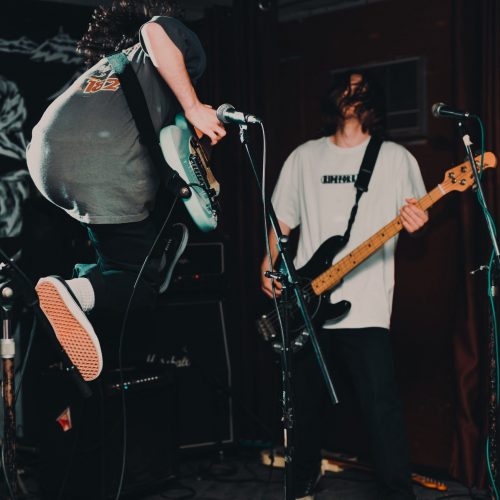Indie music is made by independent artists who aren’t signed to major labels. But “indie” means way more than that.
I’m a bit late to the bandwagon, but I started listening to Arctic Monkeys in mid-to-late high school. I’d always loved rock music, and I liked their chilled-out lyrics and guitar vibes and their videos that sometimes look disturbingly like a scene from “Dumbo” (you know the one). But when I looked at their “about” page and saw that they were listed as an indie artist, I was surprised.
What differentiates pop, rock, and indie from one another?
As Google defines it, “indie” as a noun means “an indie pop group, record label, or film company,” which really doesn’t tell us very much. It also lists as an adjective that indie means “not belonging to or affiliated with a major record or film company,” which tells us a bit more – in fact, indie is a term that comes from the 1920s, and referred to film production that was made independently of “The Big 5” studios in the business, which at the time included the likes of Paramount and Warner Bros.
This puts films like the 1920 serial film “The Screaming Shadow” solidly in the indie category of film, being a 15-part silent film that was distributed by the Hallmark Pictures Corporation, but had no studio backing at the times of the film’s production. It’s a film about a cult looking for the secret to eternal life (and world domination) and has unfortunately been lost to time. Nevertheless, it’s avant-garde approach and horror roots also give it credence to be defined as indie in several definitions of the word. Because, buried in its roots, we finally get the definition we were looking for: “characteristic of the deliberately unpolished or uncommercial style of small independent pop groups.”
Indie: Characteristic of the deliberately unpolished or uncommercial style of small independent pop groups.
What indie literally means when it comes to a genre of music is unpolished, like the kind of music that a college garage band would put together. Like I said earlier, indie as a term originally referred to film production, but in the 1970s there was a movement away from large record labels and into experimentation and the freedom to practice their craft without major label interference.
A lot of indie music is stripped down and uses piano or violin frequently, and uses simple chord structures and melodies. But its influences are far flung: from country and folk all the way to psychedelia and Japanese noise. Official.FM identifies Austin, TX and Seattle, WA as the hubs for indie music in the United States, and identifies England, France, and Germany as the main sources for the spread of indie music in Europe.
Because it grows from smaller towns and cities and slowly begins to spread over several countries, indie has become extremely popular in Europe. Artists like the Irish musician Hozier take heavy influence from American southern gothic imagery, but his homeland overseas still influences the lyrics of his music heavily.
Indie music mainstream hits are more common than ever.
It’s even harder to tell the indie from the pop nowadays. Music reviewer Todd in the Shadows admitted in his review of “Pompeii” by Bastille that his joke for years about the Fluke Indie Hit Sweepstakes was no longer valid as indie songs finding a spot on the Billboard Hot 100 was becoming such a such a common occurrence that it could no longer be called a fluke.
Even before Bastille, there were other artists leading the breakthrough of indie rock: The White Stripes, The Strokes, and The Vines were all breakout successes in the early 2000s. Their style of stripped down, back to basics rock lead to the introduction of indie rock to general audiences. An explosion of interest in the style of “garage rock” became so oversaturated that some critics called the scene the “indie landfill.” However, this explosion also led to the proliferation of emo and pop punk acts that are still popular today such as Jimmy Eat World, Fall Out Boy, Panic! At The Disco, and, yes, even the Arctic Monkeys.
James Dean Bradfield of the Manic Street Preachers even pointed to the Arctic Monkeys during an interview with The Guardian and commented that, “Indie labels still have a place in this world, absolutely, and they can still be influential. The difference now is that if a band is born out of an indie environment, it can become a massive band. That old indie belief that you don’t sell out has gone. Like Arctic Monkeys going on to become one of the biggest acts in the world… that is the well-trodden route now.”
But indie still exists in its raw form and with new social media platforms to disseminate their work, like SoundCloud, YouTube, and Spotify, the independent artists now have their chance to show the world what they have to offer.







